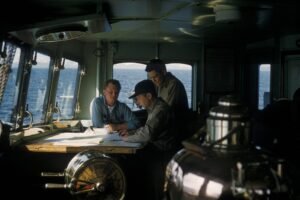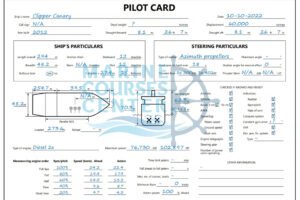
Basic Terrestrial Navigation part 1
- Posted by MCC
- Date 29/07/2020
- Comments 2 comments
Basic Terrestrial Navigation
Welcome to Marine Courses Center today we will talk about Introduction To Navigation and Navigation Meaning and Navigation Definition
Chapter One
Basic Terrestrial Navigation and Shape of the Earth
Part A
1.1 Navigation:
It is the art of finding the position of a ship at sea and conducting her safely from place to place.
• Navigation is a science in that it involves the development and use of:
1. Instruments.
2. Methods.
3. Tables.
4. Almanacs.
Navigation is an art in that it involves:
1. The proficient use of these tools.
2. The application and interpretation of information gained from such use.
1.2 Types of navigation
1.2.1 Coastal navigation:
This is the art of conducting a ship in the neighborhood of dangers, such as rocks and shoals, and in narrow water.
1.2.2 Offshore navigation:
1.2.3 Importance of studying coastal navigation:
to get full details about expected dangers such as :
· Rocks and shoals.
· Shallow water.
· Fishing boats.
· Wrecks.
· Narrow waters.
it is highly recommended to safety precautions while sailing near to the coast:
1. High accuracy in fixing the ship.
2. Fixing the ship at short intervals of time.
3. Safe speed.
4. Ensure that all the required charts are available and up to
date.
5. The presence of up to date books related to artificial aids
to navigation such as buoys, lights, fog signals and radio aids.
6. The knowledge of charts, sailing directions and other
navigational publications.
1.3 The true shape of the earth:
The earth is formed by rotating a circle about its diameter. Although the earth is not a perfect sphere, it may be considered so for the purposes of navigation, as the results resulting from this assumption are always negligible.
a represents major semi axis (equatorial radius) = 3444 miles
b represents minor semi axis (polar region) = 3432 miles
Mathematical relationship to find compression C:
C = (a-b) ÷ a = (3444-3432) ÷ 3444 = 1 / 287.
As previously mentioned, the value of compression can be neglected, however the departures from the spherical shape are only considered when:
· Constructing charts.
· Constructing navigational books and publications.
· Sailing for a long period north or south of the equator.
check our free lectures on our facebook page Marine Courses Center
Check also our related course for OOW and For 2nd Mate and chief Mate
- Ship stability LECT 1
- Ship stability LECT 2
- Celestial Navigation LECT 1 | The Concept Of Celestial Sphere
- Celestial Navigation LECT 2 | Systems Of Coordinate Of Celestial Sphere
- Celestial Navigation LECT 3 | Systems Of Coordinate Of Celestial Sphere
- Celestial Navigation LECT 4 | Systems Of Coordinate Of Celestial Sphere Part 3
- Celestial Navigation LECT 5 | Chapter 3 Diurnal motion Celestial Navigation
- Celestial Navigation LECT 6 | Chapter 4 Annual Motion
if you have any question kindly please contact with me via ICQ and here how to contact with me via ICQ click here
You may also like
Leave A Reply Cancel reply
You must be logged in to post a comment.
















2 Comments